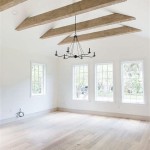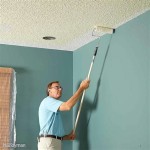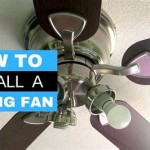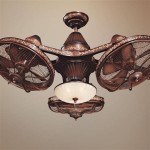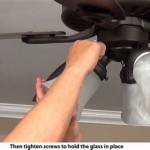Cost of False Ceiling in One Room Portland
The installation of a false ceiling, also known as a dropped ceiling or suspended ceiling, is a popular home improvement project in Portland, Oregon. It offers aesthetic benefits, hides unsightly structural elements, and can improve acoustics and energy efficiency. However, understanding the costs associated with this project is crucial for homeowners to budget effectively and make informed decisions. This article provides a comprehensive overview of the various factors influencing the cost of installing a false ceiling in a single room in Portland.
The cost of a false ceiling in one room in Portland is not a fixed figure and varies significantly depending on several factors. These factors encompass the size of the room, the type of material used, labor costs, and any additional features or complexities involved in the installation. A detailed analysis of these components is essential to accurately estimate the total cost.
Room Size and Dimensions
The primary determinant of false ceiling cost is the square footage of the room. Larger rooms naturally require more materials and labor, leading to higher overall expenses. It's important to accurately measure the room's length and width to calculate the area. Portland contractors typically provide estimates on a per-square-foot basis. For instance, a 10ft x 12ft room (120 square feet) will cost less than a 15ft x 18ft room (270 square feet) using the same materials and labor rates.
Beyond the square footage, the room's shape and any unusual architectural features can also affect the cost. Rooms with irregular shapes or numerous corners require more intricate cutting and fitting of materials, potentially increasing labor time and material wastage. For example, a room with a curved wall or an alcove will likely incur higher installation costs than a simple rectangular room of the same size.
Furthermore, the existing ceiling height plays a role. If the existing ceiling is particularly high, the false ceiling installation might require more extensive suspension systems, which could add to the material cost. The ease of access for installers is another factor. Rooms with limited access due to narrow doorways or obstructions may require more time and effort, potentially increasing labor charges.
Choice of Materials
The selection of materials significantly impacts the overall cost of a false ceiling. Several types of materials are commonly used, each with its own price point and set of advantages and disadvantages. The most prevalent options include:
Mineral Fiber Tiles: These are a budget-friendly option typically used in commercial spaces but also suitable for residential applications. Mineral fiber tiles are known for their sound absorption properties and are relatively easy to install. However, they may not offer the most aesthetically pleasing appearance compared to other options.
Gypsum Boards (Drywall): Gypsum boards provide a smooth, seamless surface and are often used for creating a more refined and modern look. They can be painted and textured to match the room's décor. While gypsum boards are more expensive than mineral fiber tiles, they offer greater design flexibility and durability. They also need to be finished, which adds time and cost.
Acoustic Panels: Designed primarily for sound control, acoustic panels are often used in home theaters, recording studios, or rooms where noise reduction is a priority. These panels come in various shapes, sizes, and finishes, with prices varying accordingly.
PVC Panels: PVC panels are lightweight, water-resistant, and easy to clean, making them a suitable option for bathrooms or kitchens. They are available in a range of colors and patterns and are generally more affordable than gypsum boards. However, they may not offer the same level of fire resistance as other materials.
Wood Panels: For a more luxurious and natural aesthetic, wood panels can be used. These can range from simple plywood panels to more elaborate designs using hardwood or reclaimed wood. Wood panels are generally more expensive than other options but provide a unique and visually appealing ceiling finish.
The cost of the suspension system also varies depending on the material chosen. A basic grid system used for mineral fiber tiles will be less expensive than a more robust system required for heavier gypsum boards or wood panels. In addition to the primary ceiling material, factors like the cost of screws, adhesives, and joint compounds also add to the overall expense.
Labor Costs and Installation Complexity
Labor costs represent a significant portion of the total cost of a false ceiling installation in Portland. The rates charged by contractors can vary based on their experience, expertise, and the complexity of the project. Highly experienced contractors may charge higher hourly rates but often complete the job more efficiently, potentially saving time and money in the long run.
The complexity of the installation significantly impacts labor costs. Installing a simple grid ceiling with mineral fiber tiles is generally faster and less labor-intensive than installing a gypsum board ceiling with recessed lighting and intricate detailing. Cutting and fitting materials around existing fixtures, such as lighting, ventilation ducts, or pipes, requires more skill and time, thereby increasing labor charges.
Permitting requirements also play a role in labor costs. Depending on the scope of the project and local building codes, a permit may be required. Obtaining a permit involves additional fees and paperwork, and the installation must comply with specific regulations, which can add to the overall cost. In Portland, homeowners should check with the Bureau of Development Services to determine if a permit is necessary.
Furthermore, the contractor's overhead costs, such as insurance, transportation, and equipment, are factored into their labor rates. It is advisable to obtain multiple quotes from different contractors to compare their prices and services. However, selecting the cheapest option is not always the best approach. It is important to consider the contractor's reputation, experience, and customer reviews to ensure a quality installation.
The removal of the existing ceiling, if necessary, will also add to the labor costs. This may involve demolition and disposal fees, particularly if the existing ceiling contains asbestos or other hazardous materials requiring specialized removal procedures. Homeowners should clarify whether the contractor's quote includes the removal and disposal of the old ceiling.
Accessibility of the room is another factor. If the room is difficult to access, requiring the contractor to carry materials up multiple flights of stairs, this can add to the labor time and cost.
Additionally, if the homeowner requests custom designs or intricate patterns, this will significantly increase the labor cost due to the specialized skills and time required to execute such designs. Custom designs may also require more material, leading to a higher overall expense.
Finally, the timeline of the project is important. If the homeowner requires the project to be completed within a short timeframe, the contractor may charge an expedited fee to accommodate the tight schedule.
In summary, the labor costs for a false ceiling installation in Portland depend on a combination of factors, including the contractor's rates, the complexity of the installation, permitting requirements, material disposal, accessibility of the room, and any custom designs requested by the homeowner. Obtaining detailed quotes and carefully evaluating contractors are essential steps in managing these costs effectively.
In addition to the main factors, other aspects can influence the overall cost. For example, if you are installing a false ceiling to hide existing wiring, then those electrical needs will need to be considered. Similarly, if you are installing it to address a leaky roof, you will need to fix the roof first. Finally, if you choose to go with a company that is not properly licensed and insured, there are significant potential risks in terms of quality of work and liability.

Pop Designs For Your Home In 2024

Sakarni Gi Channels Pop False Ceiling In Residential Thickness 5 These Panels Can Be Mounted On Top Of The Existing And Finished With Any Type Drywall Paneling Or Plaster At

Pop Designs For Your Home In 2024

Usg B Fibreglass Calcium Silicate False Ceiling At 160 Sq Ft In Pune

Diffe Types Of False Ceiling Commonly Used In

Pop Designs For Your Home In 2024

12 Pop Ceiling Designs For Hall Trendy Living Room 2025

Pop Designs For Your Home In 2024

12 Pop Ceiling Designs For Hall Trendy Living Room 2025

Shera Ceiling Board Fibre False
Related Posts

